
Apple tree: planting, pruning and care
Contents
Apple tree, in a nutshell
- Apple trees remain the most widely cultivated fruit trees in Europe because of the incomparable flavour of the apple, and also because they are more tolerant of late frost and lime than pear trees.
- Apple trees require a well-structured, fertile, cool and well-drained soil and good sun exposure, at least in the northern half of France. In the southern half of France they will tolerate a north-facing exposure except for espalier forms.
- Apples are harvested from September for the earliest to November and can be stored for several months.
- Plant at least two compatible apple tree varieties in the garden and choose varieties resistant to diseases (notably scab) to limit treatments.
A word from our expert
Apple trees offer such a choice of varieties, of forms, – columnar, erect to spreading -, and of vigour, from 1 m for container planting to over 10 m, and are used freely in all kinds of landscaping. In addition to their exceptional hardiness (-30°C), these trees produce a sumptuous white tinged with pink to bright pink flowering in April–May and fruits with varied flavours that can be eaten fresh or cooked as desired. Some apple varieties known as storage varieties also have the advantage of being edible almost until spring without processing.
These trees prefer mild, misty climates, apart from recent varieties adapted to hot, dry climates of southern France. The apple tree is easier to grow than the pear tree thanks to later flowering and better tolerance of lime (up to 15% active lime). It can be positioned north-facing in southern France, except for espalier forms which should face south-east or south-west.
Malus domestica prefers heavy, clayey, fertile and cool but well-drained soils. Quality of harvests depends on presence of a pollinating variety, soil fertility and also regularity of pruning or training. However, S-pur type varieties (columnar or sparsely branched) and open-grown varieties (free habit) need little or no pruning, so it is very easy even for an inexperienced gardener to obtain a good harvest. The only drawback is the number of diseases and pests able to affect apple trees, victims of their own success. But significant agronomic research efforts now make it possible to choose varieties resistant, notably to scab if you live in a particularly humid climate. It is important to consider vigour and rootstock tolerance to your soil if you wish to train your apple tree as a cordon or palmette or, conversely, obtain a large open-grown tree. Buying a tree already trained (standard, goblet, palmette…) represents a greater investment than buying a simple whip (1-year stem little or not branched) but saves a lot of time before fruiting!
Description and botany
Botanical data
- Latin name Malus domestica
- Family Rosaceae
- Common name Apple tree
- Flowering between March and May
- Height between 1 and 10 m
- Sun exposure sun or partial shade
- Soil type clay, well-drained, even calcareous
- Hardiness Excellent (-30 °C)
Le Apple tree is a fruit tree widely domesticated for centuries, so that its scientific name Malus domestica, for lack of knowledge of the ancestors of cultivars, simply designates the apple, Malus in Latin, with the epithet “domestica” indicating plants cultivated near habitations. Wild nature includes nearly 60 species of Malus, ornamental and fruit-bearing, the species domestica being applied to all consumed apple varieties resulting from numerous cross-breeding over the centuries. Tree is native to temperate zones of Northern Hemisphere. Apple tree is a pome fruit tree with pips of the Rosaceae family, like most fruit trees in our regions: pear trees, quince trees, as well as stone-fruit trees such as plum, peach, cherry and apricot trees.
These trees, sometimes reaching 10 m in height with a 4.5 m spread, remain modest in size. They display an elegant, perfectly balanced habit, with a crown most often rounded, borne on a straight, stocky trunk. Some varieties have an upright habit or are even reduced to a column 1 m wide, allowing them to occupy little ground space. Apple tree bark, smooth at first, becomes scaly with brown‑grey hues, while shoots are grey to reddish. Unlike wild apple Malus sylvestris, shoots are downy and leaves fairly rounded.
Apple tree leaves are single and dentate, borne on a short petiole and of modest size (5–6 cm long by 3–4 cm wide). They are deciduous, rather dark green and often pubescent beneath. Their arrangement is alternate on the shoot (not symmetrical but staggered) or in whorls (several leaves at the same height around the shoot) on spurs (very short shoots).
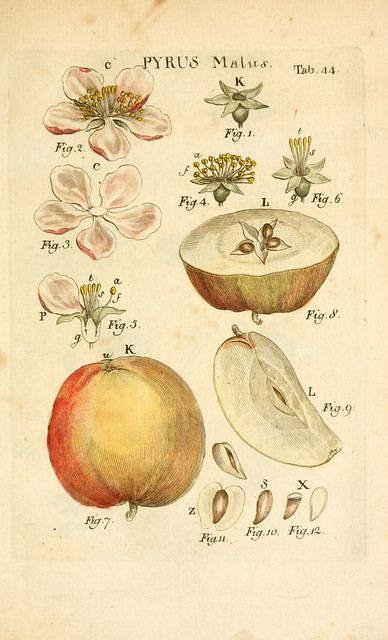
Malus domestica – botanical illustration
Flowers appear in clusters of 5 to 10 corollas, in spring, in April–May, at the same time leaves emerge. The corolla comprises 5 rounded petals, white tinged with pink, while the calyx is formed of 5 triangular sepals. Numerous stamens surrounding the pistil make the flower centre sparkle, attracting many pollinating insects. Fertilization is better when two compatible varieties can pollinate each other. If you do not know the name of your variety, plant a flowering variety such as Malus Evereste® or Golden Hornet, or the excellent, robust, timeless variety Reine des Reinettes, whose flowering period ensures pollination of all your apple varieties.
Apple trees are more or less sensitive to the alternate phenomenon that causes a profusion of apples every other year. This can be remedied by thinning the tree after the natural drop of some young fruits in June. Thinning involves removing a number of fruits so as not to exhaust the tree, which otherwise will compensate the following year with a poor harvest. This produces apples of larger size and better flavour quality.
Apples are berries classified as pseudocarps because they develop from the thickening of the flower receptacle which envelops the 5 fused carpels (base of the pistil), forming the core. Thus remnants of dried sepals are found at the top of the fruit, as in the pear. The fleshy part of the apple is juicy and becomes more or less firm and sweet at ripeness, endowed with nearly 350 aromatic components that give it infinite flavour nuances (500 for rose and 250 for jasmine).
There are nearly 6,000 apple varieties, often regionally cultivated in the past. Today only about ten varieties are marketed worldwide, including Gala, Golden Delicious, Braeburn, Fuji, Granny Smith and Cripps Pink. Fortunately nurseries and fruit-tree conservatories work to multiply old varieties often well adapted to a region’s climate, also to preserve their genes, and new, very tasty varieties generally resistant to disease regularly appear.
Read also
What are the best apple varieties?Main varieties of apple trees
Choose the right variety to suit your criteria
Find our advice in the full guide: Apple tree: how to choose the right variety?
How to choose the form of your apple tree?
To find out more, see this guide: Choosing fruit trees: forms and varieties
Good to know:
- Espalier-trained forms (cordon, palmette, double U…) of apple tree are grafted onto low‑vigour rootstocks such as Mac 9, M9 or M26. Buying a tree already trained as cordon or palmette is a significant investment but saves a lot of time on fruiting! Bear in mind, however, that low‑ and medium‑vigour rootstocks are sensitive to excess lime (pH >7.5).
- Open-grown, free‑standing forms of apple tree are grafted on M2, M106, which tolerate lime‑rich soils quite well.
- Spur-type varieties whose main limbs naturally bear many fine, short, fruit-bearing shoots need almost no pruning to give a regular harvest. Spurs include spindle varieties but not all Spurs are necessarily columnar, as with variety ‘Reinette Clochard’. They are often rather bushy and lack a leading shoot, so allow space around them to encourage renewal of the fruit-bearing shoots.
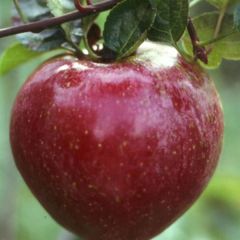
Apple Tree Royal Gala - Malus domestica
- Flowering time May
- Height at maturity 4 m
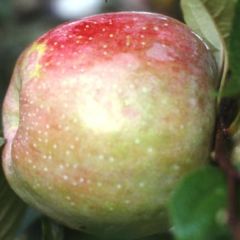
Apple Tree Belle de Boskoop - Malus domestica
- Flowering time May
- Height at maturity 5 m
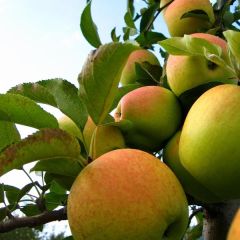
Malus domestica Golden Delicious - Golden Delicious Apple
- Flowering time May
- Height at maturity 4,50 m
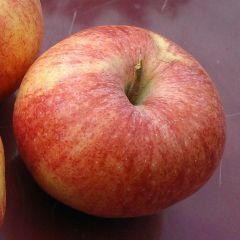
Apple Tree Reine des Reinettes
- Flowering time May
- Height at maturity 5 m
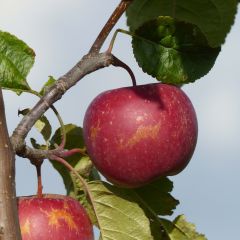
Apple Tree Choupette - Malus domestica
- Flowering time May
- Height at maturity 4 m
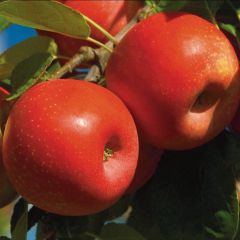
Apple Tree Ariane - Malus domestica
- Flowering time May
- Height at maturity 5 m
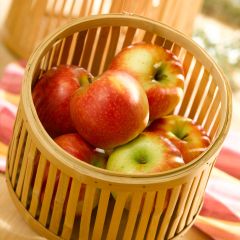
Apple Tree Delbard Jubilee - Malus domestica
- Flowering time May
- Height at maturity 5 m
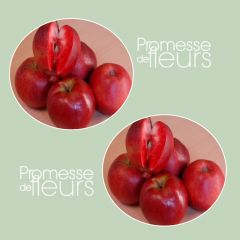
Apple Tree Maggy - Malus domestica
- Flowering time May
- Height at maturity 5 m
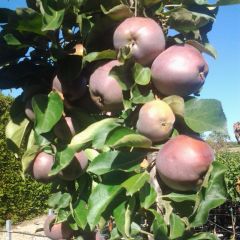
Columnar Apple Tree Ballerina Polka - Malus domestica
- Flowering time April
- Height at maturity 3 m
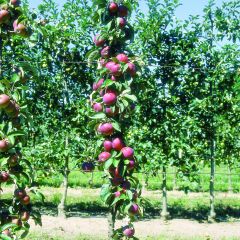
Columnar Apple Tree Villandry - Georges Delbard
- Flowering time May
- Height at maturity 2 m
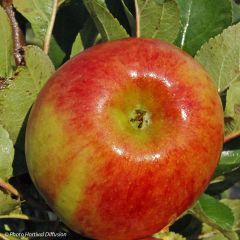
Columnar Apple Tree Rhapsodie - Malus domestica
- Flowering time April
- Height at maturity 3 m
Discover other Apple trees
View all →Available in 0 sizes
Available in 0 sizes
Available in 0 sizes
Available in 0 sizes
Available in 0 sizes
Available in 0 sizes
Available in 2 sizes
Available in 1 sizes
Available in 1 sizes
Available in 1 sizes
Planting
Where to plant apple trees?
- Apple trees grow throughout France but many varieties bred in a given region are better adapted to that region. Take their preferences into account, especially if you live in higher-altitude areas (choose late flowering in May). In lowland, humid and misty climates, prefer varieties resistant to apple scab, and in warm, relatively dry climates prefer varieties grafted onto M7, M109 or M111. Beware that spindle-shaped or dwarf forms designed especially for container growing are more sensitive to cold.
- Le apple tree tolerates well the north-facing exposure, particularly in southern half of France. However, espalier forms prefer a south-east or south-west orientation.
- These fruit trees like heavy, clayey, rich and cool but well-drained soils. Choosing a suitable rootstock allows planting in more or less calcareous soil.
- In humid climates, prefer varieties resistant to apple scab.
When to plant?
Prefer autumn–winter planting, especially if the young plant is sold as bare roots and during frost-free periods.
How to plant?
If installing a trained/espalier form, make sure to set up a sturdy espalier framework and staking system before planting (end post fitted with a brace, wires, intermediate posts, etc.).
This tree is easy to grow.
- For a young plant in a pot, plunge the rootball into a bucket of water to thoroughly moisten it; if it is a scion with bare roots, neatly trim damaged roots, then coat them with pralin, or failing that with mud.
- Work the soil by removing stones and unwanted weeds,
- Using a spade, dig a hole 50 to 60 cm all round, avoiding smoothing the sides. Place subsoil to one side and topsoil to the other.
- To enrich the soil, mix horn meal (rich in nitrogen), optionally a base fertiliser (rich in phosphorus and potassium) and organic matter (potting compost, compost…) with the subsoil and pour this mixture into the bottom of the planting hole.
- If planting an open-centred tree or a single-stem tree, drive 1 to 3 stakes set back from the rootball.
- Place the young plant so the collar is level with the soil, then backfill with topsoil, forming a basin.
- Pour a full watering can to settle the soil and expel air bubbles.
- Tie the stake to the trunk, crossing the tie in a figure-of-eight, without letting it touch the trunk.
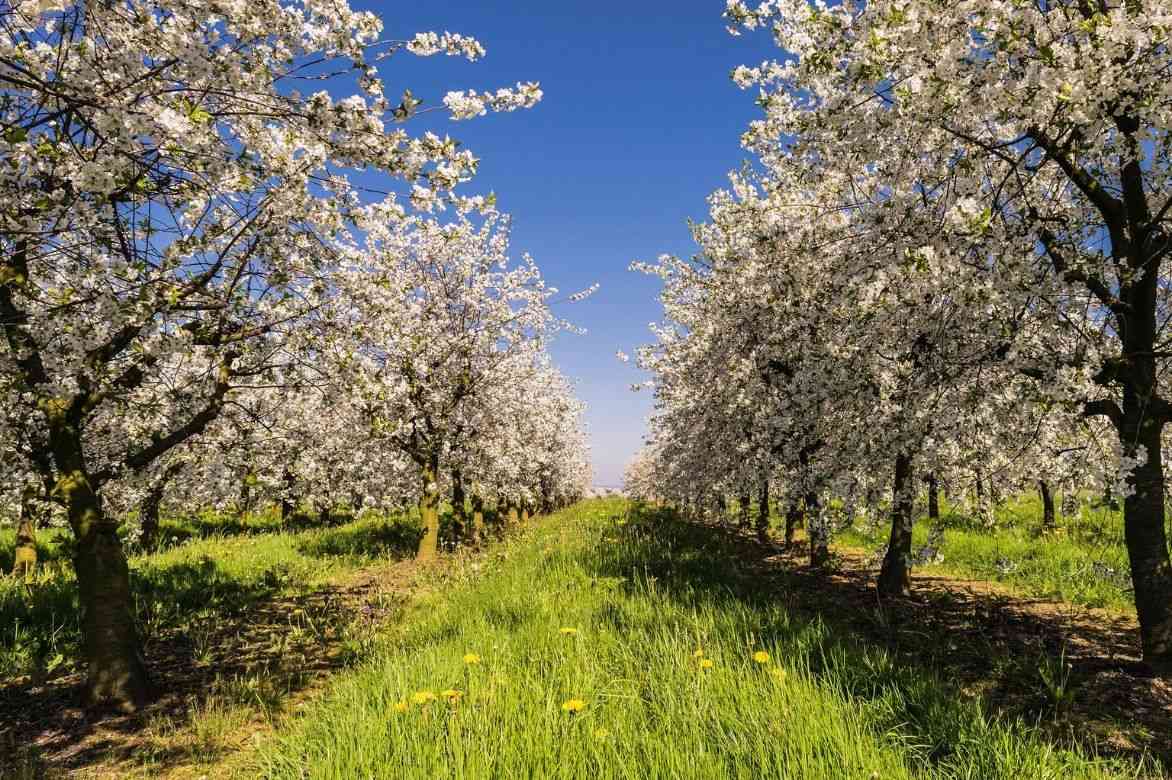
Read also
Fruit trees: pruning of a young shootPruning, care
- Water regularly during first years after planting and in periods of high heat.
- Maintain a mulch of dead leaves, straw, B.R.F or half‑decomposed compost to prevent competition from weeds.
- Apply compost at drip line of crown each autumn to maintain soil fertility. Optionally, during winter, add a small handful of wood ash, rich in potash, to improve fruiting.
- In June, when apples are set, carry out thinning: keep only 1–2 fruits per cluster, favouring largest apples located in centre of cluster. Find out more in our tutorial Why and how to thin fruit trees?
Apple trees are susceptible to fungal diseases such as apple scab and brown rot in humid climates, and to powdery mildew in drier climates. Treat with fungicidal preparations such as horsetail or nettle manure, or with a copper‑based product to limit diseases. The codling moth is a moth that lays eggs and causes wormy apples. Pheromone traps installed at end of May or corrugated cardboard wrapped around trunk in mid‑June (removed and burned in November) reduce number of codling moth caterpillars. Installing a sticky collar around trunk in early spring helps control aphids by trapping ants that tend them. Apply a winter treatment of rapeseed oil to bare shoots and/or whitewash trunk with lime in autumn to eliminate overwintering stages of these pests.
→ Find out more in our advice sheet: Apple tree diseases and pests.
Apple tree pruning
Apple tree takes time to establish, so wait at least 3 years on weak rootstocks and often 7–8 years on vigorous rootstocks before harvesting fruit. By contrast, production can last more than 80 years!
- When forming tree as a bush or standard, ensure even distribution of scaffold branches all around trunk and balance their length.
- Remove branches that cross or grow towards centre of crown.
Espalier forms are the most demanding in pruning to maintain training shape — U, double U, palmette or cordon. Prune in March and use three‑bud pruning, which consists of leaving 3 buds on each shoot to turn them into short fruiting spurs (short pruned shoots). However, pre‑trained trees already show flower buds (large, rounded buds) that should simply be retained in sufficient number when pruning. Pinching out or green pruning in July allows completion of winter pruning and correction of mistakes: Leave 7 leaves after a fruit and remove non‑fruiting shoots to allow sun to colour the fruits.
→ Read also: How to train an apple tree as a cordon?
Natural spindle or very trailing forms, such as Granny Smith or spur types, need little or no pruning to fruit well.
For other cases (open‑grown forms, etc.), no panic — you can limit interventions to every 2 or 3 years to carry out following operations between November and March:
- Remove if necessary suckers that have grown at base of tree and water‑shoots developing on trunk.
- Remove dead or broken branches and those that cross each other.
- Cut small twigs and some branches growing into crown to let air and light circulate inside.
- Prune branch tips above an outward‑facing bud if necessary; otherwise leave terminal fruit to cause bending of shoot and thus encourage development of new buds.
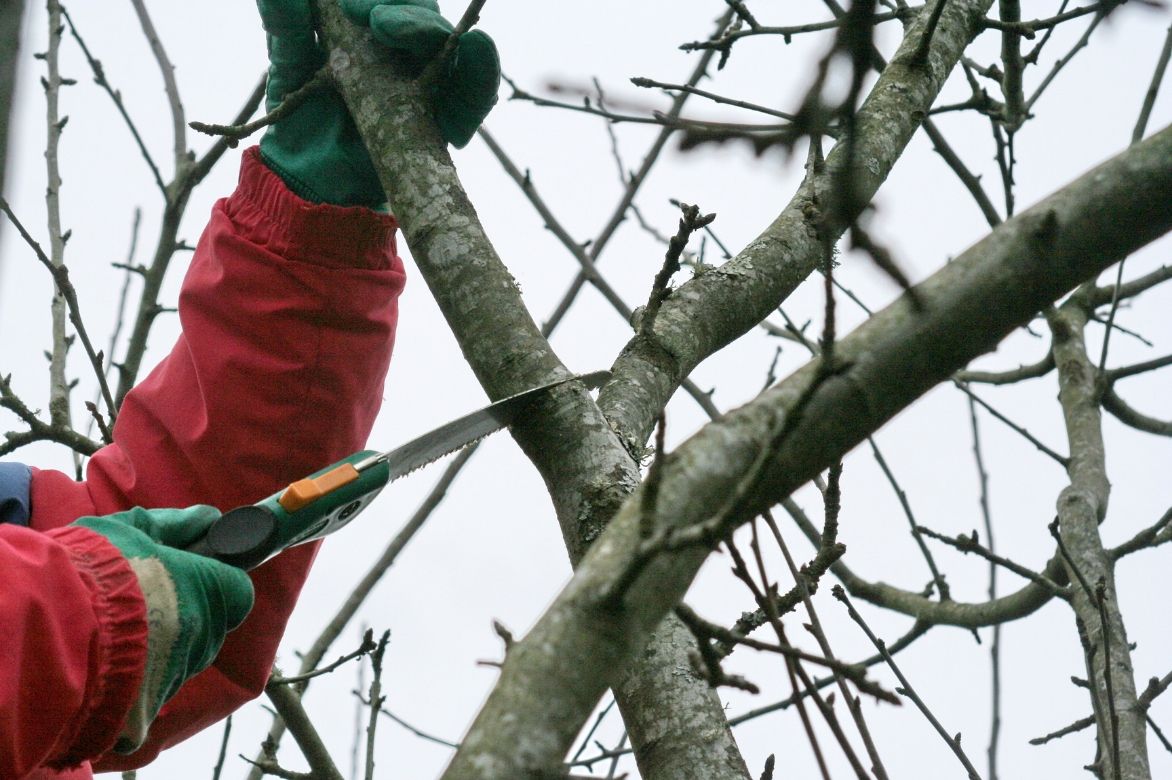
Propagation
Most commonly used method of propagation is grafting onto a rootstock raised from sowing. Most common technique is shield budding with a growing eye or a dormant eye, but this method of propagation remains the preserve of professionals and experienced gardeners.
Sowing of apple pips
This technique is uncertain in its outcome and apple tree obtained will bear fruit after at least 10 years, or perhaps never. This is how new varieties are obtained, but outcome of an amateur sowing is a lottery that more often yields a cider apple than a wonderful new variety.
- Remove pips from a ripe apple, wash them under cold water and dry them in a tea towel.
- Leave them to dry for 2–3 days at below 15°C, turning occasionally.
- Then stratify the pips in a pot by placing them between two layers of damp sand for 3 months.
Uses and companion plants
Apple trees planted as isolated specimens or 5 to 7 m apart make excellent small trees, both useful and ornamental for habit, flowering and fruiting. They can provide cast shade for creating a garden seating area, although dining beneath their crown will be difficult because branches tend to droop over time. You can also insert them into a mixed hedge of trees and deciduous bushes, adapting training (upright habit) and avoiding shade from a large tree.
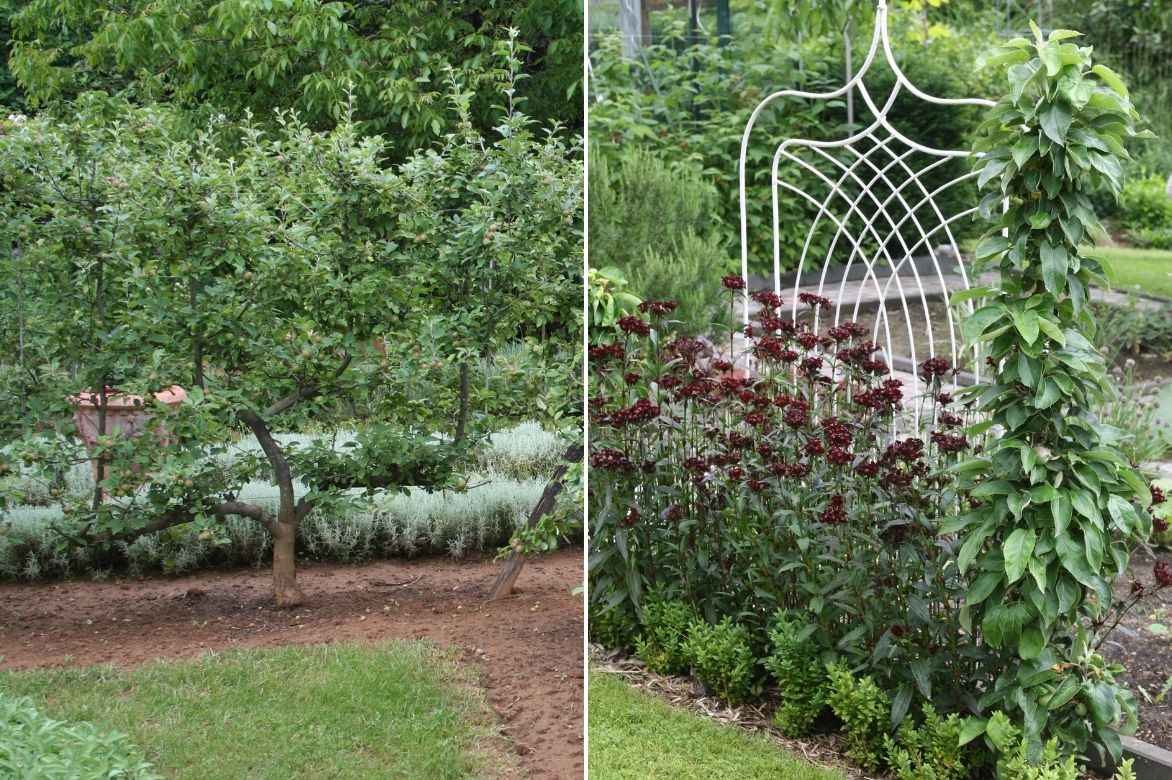
Espalier apple and columnar apple
They can be paired with flowering and fruiting bushes within a large border, such as raspberries, currants, blueberries, serviceberries, Prunus triloba…
Spindle apple trees such as Rhapsodie or Villandry, or dwarf fruit trees like Garden Sun Red® adapted to container growing, have the advantage of offering a spectacular spring flowering followed by production of normally sized fruit, both succulent and decorative. These trees do not need pruning and simply require a specific fertiliser feed when grown in a container to help fruits increase in size. Plant them in a large terracotta or resin pot and invest in an automatic watering system to prevent lack of water.
Create a bucolic, country scene on a terrace or balcony by pairing spindle apple trees with “columns”, hanging strawberry baskets or square or rectangular planters planted with vegetable plants.
Further reading
Discover:
- Our range of apple trees: a very wide choice of varieties and forms
- Advice sheet: Apple tree: best varieties, 6 late apple varieties
- Advice sheet: Cider apples: which varieties to choose
- Advice sheet: How to get rid of mistletoe on an apple tree?
- Advice sheet: How to combat woolly aphid on apple tree
- Advice sheet: How to create a conservation orchard?
- Advice sheet on alternate bearing in fruit trees
- Advice sheet: Harvest and storage of apples and pears
- Advice sheet: How to make dried apples?
- Advice sheet: What is a rootstock and which to choose?
- Advice sheet: Pruning fruit trees in palmate
- Advice sheet: Which fruit trees and bushes to plant in clay soil?
- Advice sheet: Fruit trees: most popular self-fertile varieties
- Discover the best cooking apples, the best eating apples, sweet or tart apples?
- Advice sheet: Apple tree: how to choose right variety?
- Advice sheet: 7 best apples for long-term storage
- Discover benefits of choosing heritage and local varieties of apple trees
- Subscribe!
- Contents
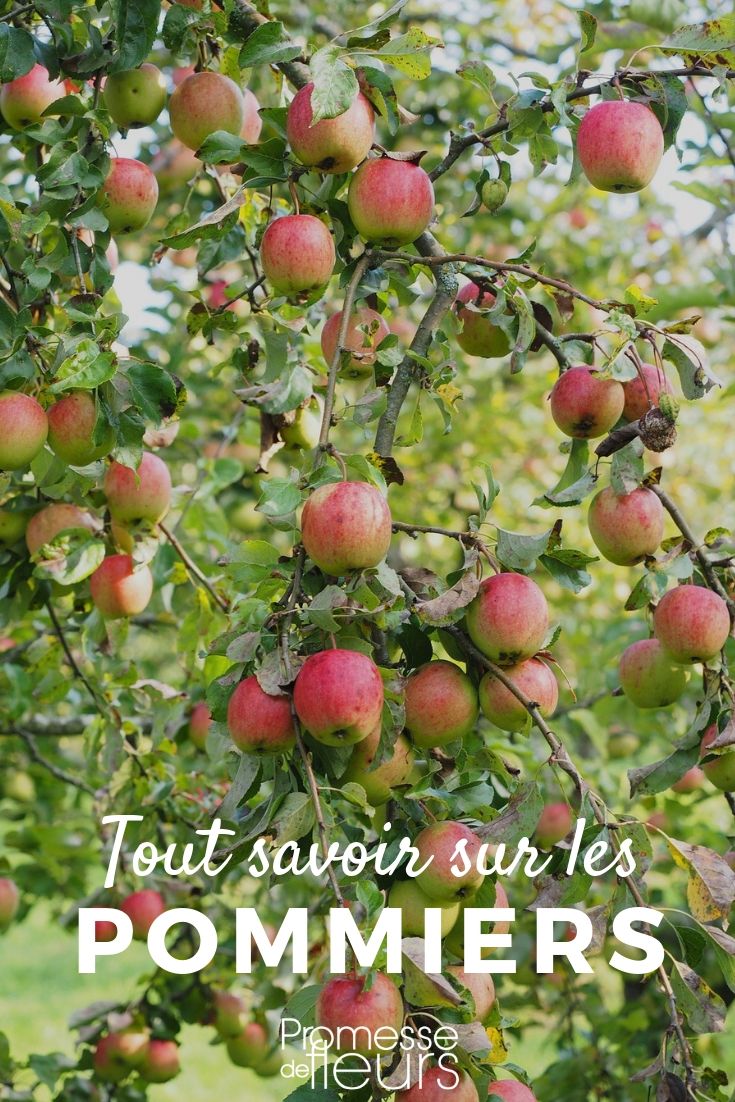
































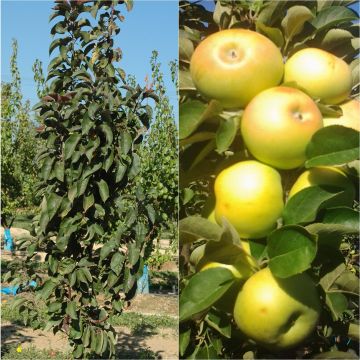
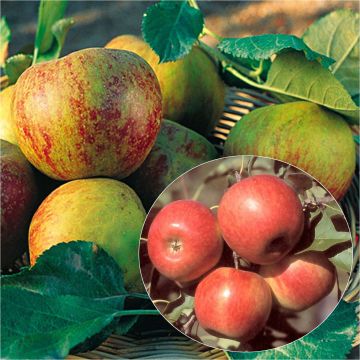
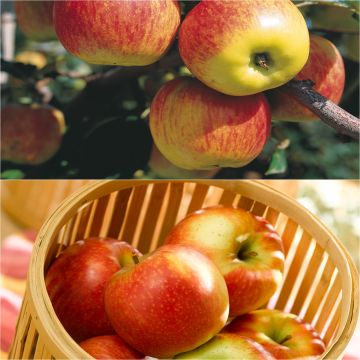
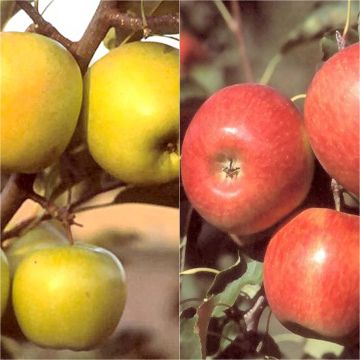
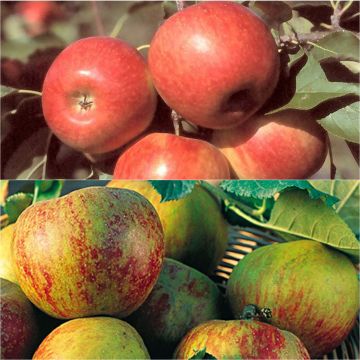
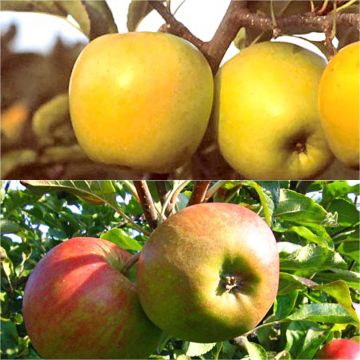
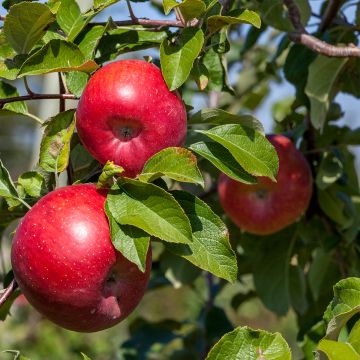


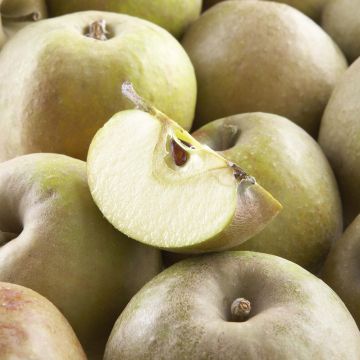
Comments